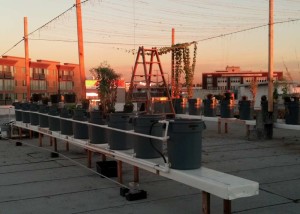LeMoniteur.fr, 2 janvier 2014
Les installations de panneaux photovoltaïques dans le monde vont poursuivre une croissance à deux chiffres en 2014, après une année 2013 meilleure que prévue grâce au Japon notamment, selon les prévisions annuelles du cabinet spécialisé IHS.
Selon ce dernier, les nouvelles capacités de production d’électricité photovoltaïque atteindront un nouveau record compris entre 40 et 45 GX l’an prochain. En 2013, le marché a dépassé les 35 GW, soit un nouveau sommet après 31,2 GW en 2012 et 27,5 GW en 2011, souligne IHS.
Et contrairement à ses prévisions de l’an dernier, le marché en valeur ne s’est pas contracté comme en 2012, progressant au contraire de 7 % à 83 milliards de dollars. L’explication, qui est aussi un des enjeux principaux de 2014, vient d’un pays: le Japon, deuxième marché national dans le monde en 2013 derrière la Chine, explique IHS. Quelque 6,3 GW de panneaux solaires ont été installés en 2013 au Japon, un marché tiré par l’arrêt des réacteurs nucléaires dans l’archipel après la catastrophe de Fukushima.
L’an prochain, ce chiffre devrait grimper à 7,2 GW, même si IHS avertit toutefois d’un risque d’explosion de la bulle du photovoltaïque nippon, du fait du récent demi-tour du gouvernement japonais, qui a réduit drastiquement ses engagements en matière de CO2. La Chine, premier marché au monde, devrait-elle poursuivre sa course en avant dans le solaire en installant 9,3 GW, contre 8,6 GW, mais rester donc en dessous de l’objectif officiel des 12 GW pour 2014. Le marché américain, le troisième au monde, devrait également croître lui aussi, à 6,4 GW contre 5,5 GW en 2013.
À l’inverse, l’Allemagne, jadis un leader mondial, restera à une terne 4e place et son marché se réduira de nouveau après des baisses drastiques de ses tarifs de soutien, note IHS, qui prédit 3,7 GW en 2014 après 3,8 GW en 2013. Le pays européen où la croissance du solaire devrait être la plus forte serait, selon ses prévisions, le Royaume-Uni, qui passerait de 1,3 GW en 2013 à 1,7 GW, prenant à l’Italie la cinquième place mondiale.
Le marché français afficherait lui une légère progression à 0,8 GW, et remonterait au 8e rang mondial. Dans les autres tendances, IHS souligne à la fois l’essor du stockage d’électricité photovoltaïque (qui devrait quadrupler à 753 MW en 2014), la stabilisation des marges des grands fabricants chinois de panneaux, qui se sont améliorées ces derniers mois, et l’émergence du marché sud-américain, qui devrait quintupler à 1,4 GW l’an prochain.
Source ENERPRESSE


